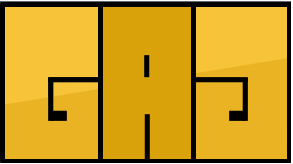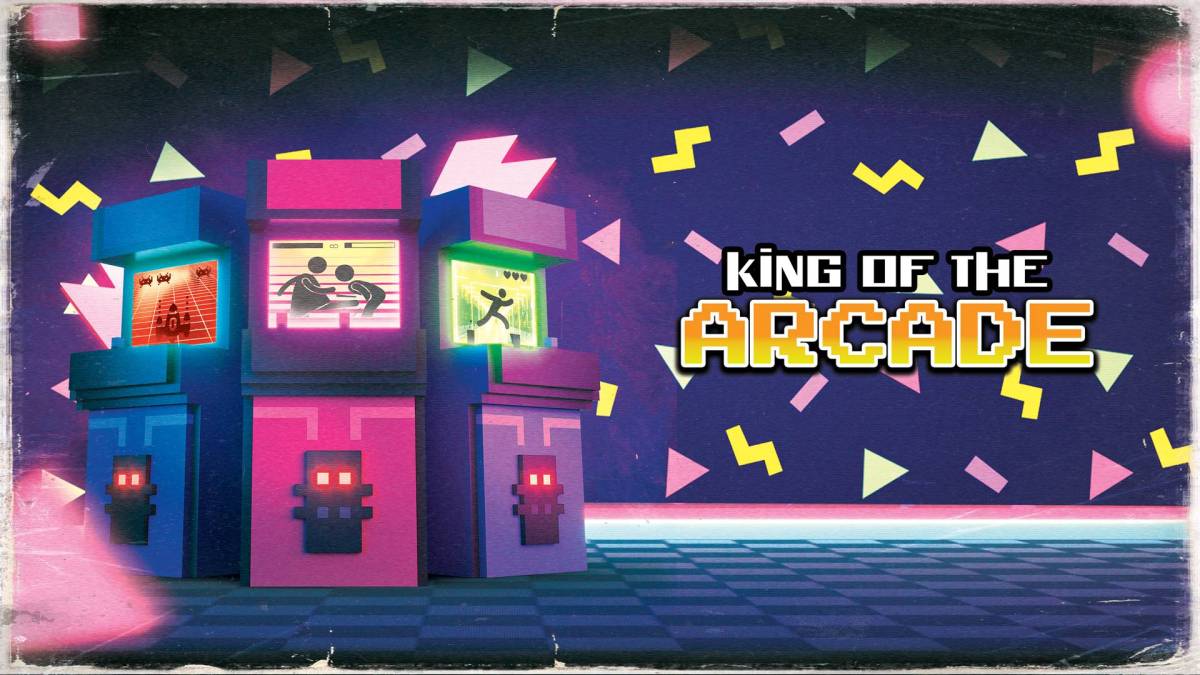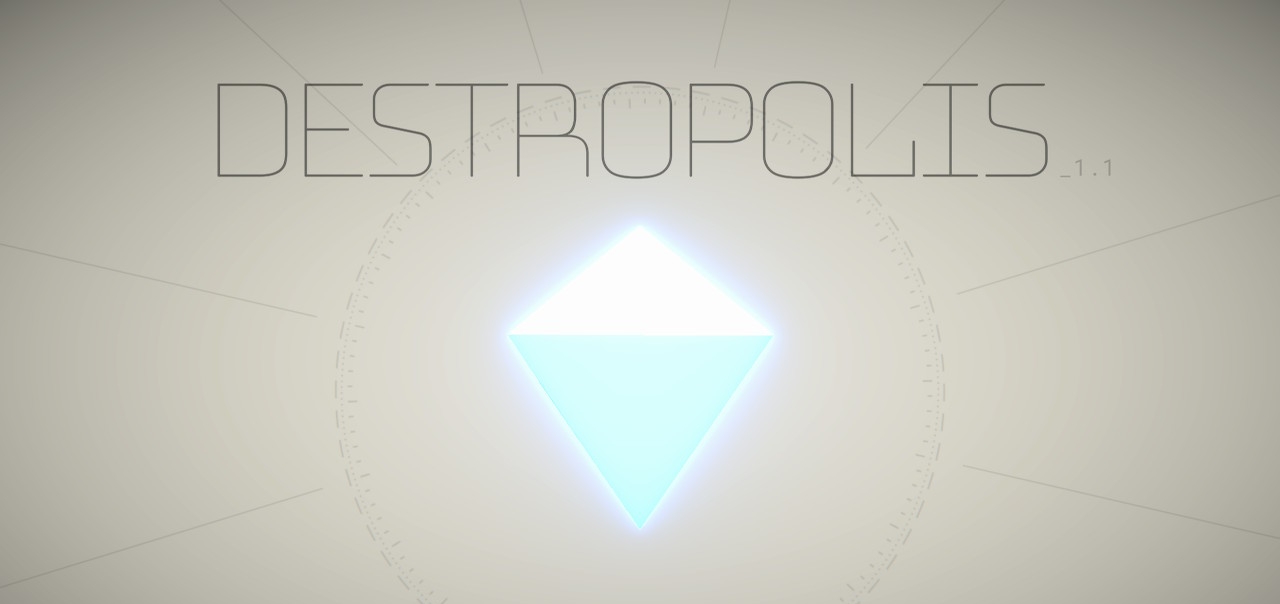
Platforms: Nintendo Switch (reviewed), Microsoft Windows
At first glance, you might be wondering just what the hell kind of game Destropolis is. Well, it turns out that it’s a top-down twin-stick shooter with a fully destructible environment. If I hadn’t just played it, that probably wouldn’t have been my first guess, judging by the way it looks. As the old cliché goes though, don’t judge a book by its cover. Destropolis may be minimalistic in its design, but I’ll be damned if it isn’t a blast to play.
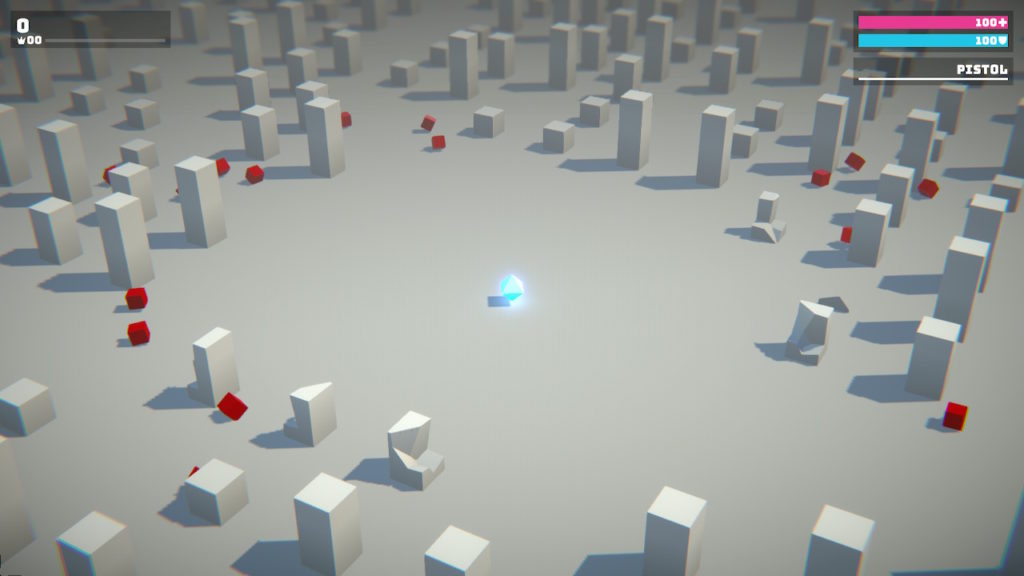
As Destropolis begins, you’ll take on the role of a tiny blue octahedron that is dropped into a futuristic city with its only goal being to survive. You’ll quickly be surrounded by an endless swarm of red cubes, and you’ll have no choice but to fight. Here’s where the game becomes a twin-stick shooter. Much like its design, the gameplay is simplistic as you’ll use the left stick to move, the right stick to aim, the right bumper or trigger to shoot, the B button to pick up weapons, and the A button to swap between them. It’s a tried-and-true control scheme, and it works great here.
At the beginning of the assault, you’ll only be outfitted with a simple pistol, but as you start to take down enemies, they have the chance to drop new weapons for you to pick up. These weapons range from your typical assault rifle and shotgun to more unique ones like a gauss gun and a laser beam. There are over a dozen weapons in the game and each of them feels just different enough that you’ll have to alter your play style to accommodate the weapon you have. This keeps things fresh, as you’ll constantly be changing things up as you acquire different weapons.

Each weapon, outside of your starting pistol, will have a limited ammo count. Once you’ve depleted it, you’ll lose that weapon. Weapons also have a heat capacity, so there’s no need to worry about reloading, but you’ll need to be mindful of holding down the trigger constantly or else they will overheat. You can also hold up to two different weapons at a time, and you have to choose to pick up a new weapon rather than your character automatically grabbing it. I liked this as it helps avoid situations where you get stuck with a weapon that you’re not comfortable using.
Enemies can also drop a number of different power-ups as you kill them. There’s a dozen of these and they include modifiers that will double your damage or increase your speed, as well as offensive items like turrets and a giant nuclear explosion. Power-ups are great ways to take out a large group of enemies or help you get out of sticky situations, but they have to be picked up and are used instantly. So, there were plenty of times I had to weigh the risk and reward of pushing through a group of enemies to get to one. I will say, it is a great feeling to battle through the horde to pick up a nuke and watch a large number of enemies get blown to pieces.
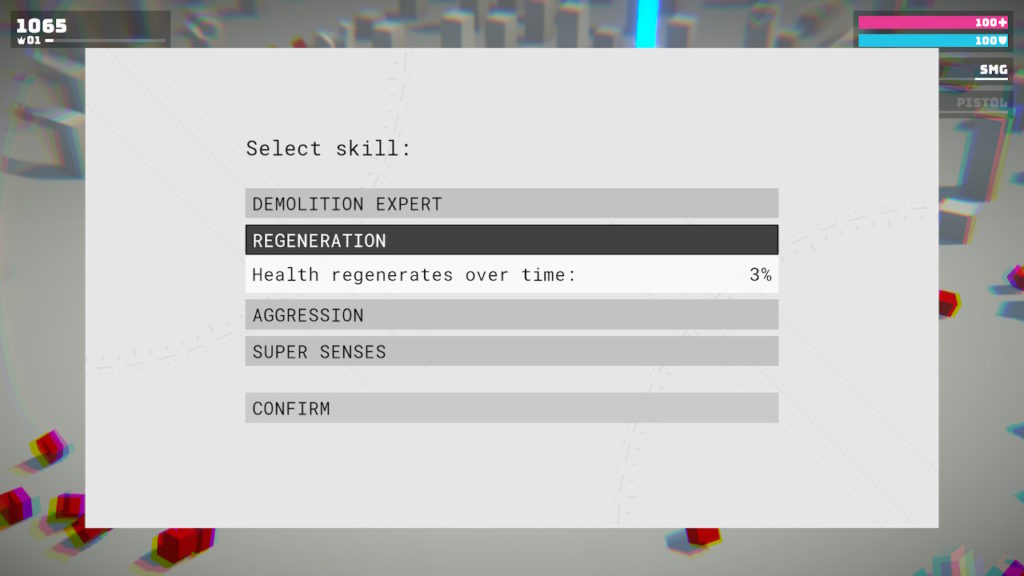
Yet another way you can power up your little octahedron is with the use of skills. After you tear through enough enemies your character will level up. With each level, you’ll get to choose between one of four skills. These can do everything from increasing your health or weapon heat capacity to making power-ups more efficient or have them drop more frequently. The skill choices you have are completely random with each new level you gain and there are 40 different ones in the game, so there is actually a ton of variety to play around with here.
As I mentioned earlier, your only goal in Destropolis is to survive. There’s no real endgame, so you’ll be playing solely to chase a higher score with each run. You’ll also start each run from scratch, so any skills you earn will not carry over once you die. There is an overall player level though, which caps out at level 15. After each run your total score will be added to your progress bar and with each new level, you’ll unlock a new weapon or skill that you can then find in subsequent runs. It’s not the greatest progression system I’ve ever seen, but it’s nice to at least have a little something to work towards.
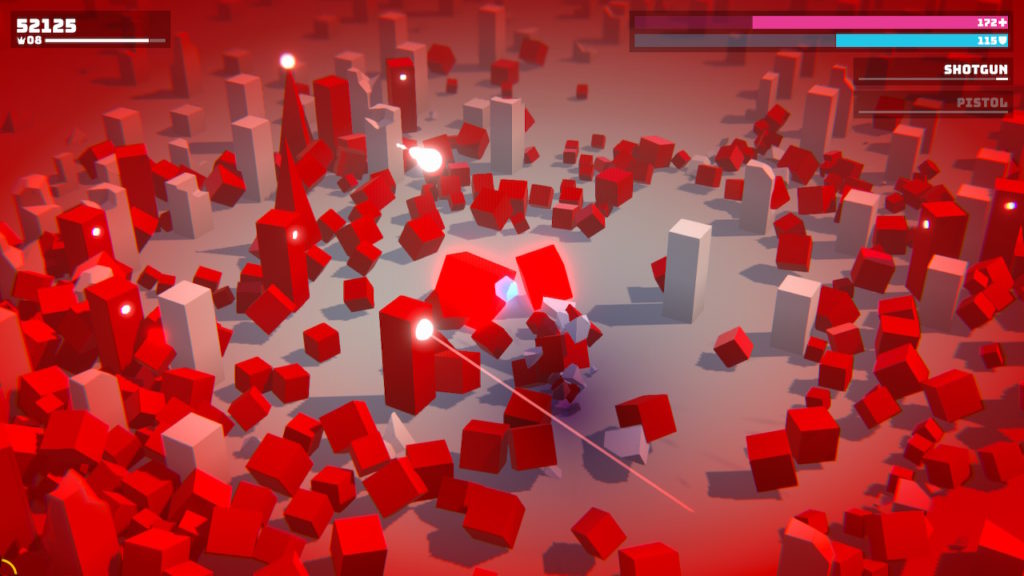
Going back to the art design, I’d imagine it will be an acquired taste for some. I personally enjoyed the minimalistic nature of Destropolis though. It’s just crisp and clean and that really helped me keep track of what was going on in the chaos of battle. You always know where your character, the enemies, and weapons or power-ups are because it’s all nicely color coded.
Sound design in Destropolis is also pretty solid. Each weapon has its own unique sound, which helped to differentiate between them that much more and I appreciated that. The soundtrack also fits with the game nicely as well. The music is done by LukHash and is a mix of chiptunes, synthwave, and EDM. The track that plays during gameplay adds to the on-screen action without being too overbearing. The tracks on the title screen and game over screen also get you ready for action and help you come down from the battle. There aren’t a ton of tracks, but I enjoyed the tunes that were there.
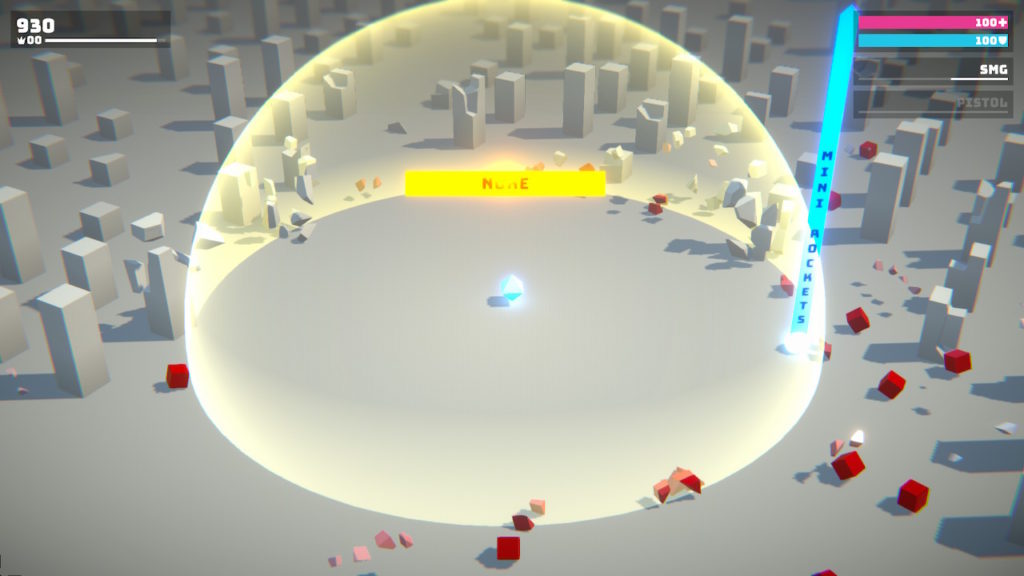
Destropolis is easy to pick up and play. It’s simple in both its look and gameplay, but it’s also just a lot of fun. The gameplay loop of finding new weapons and power-ups, blasting through enemies, leveling up, and earning skills keeps each run fresh. It’s probably not a game I’m going to play extensively, but it’s definitely one that’s a blast in short bursts and I can see myself coming back to it whenever I get the itch for some twin-stick shooter action. If you’re a fan of the genre, this is one that is definitely worth a look, and dare I say, it may actually be a hidden gem.

